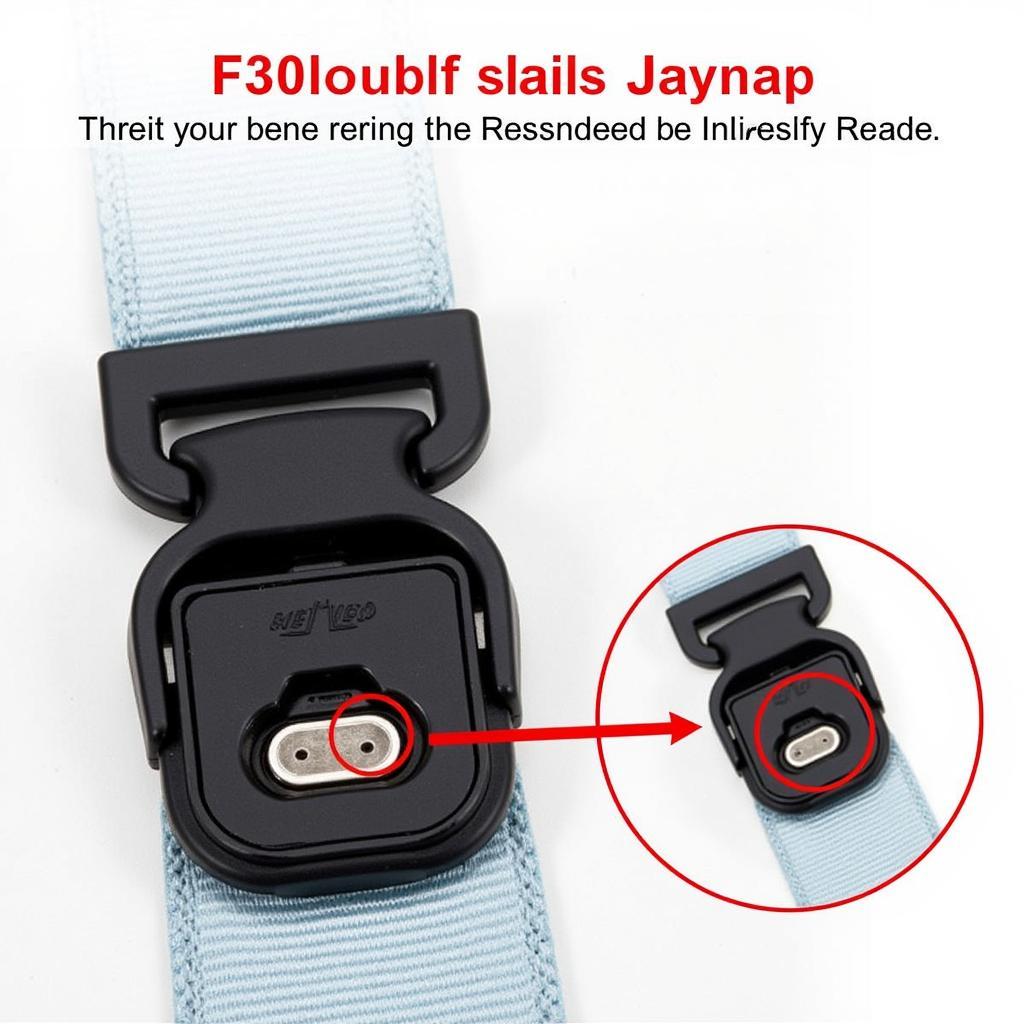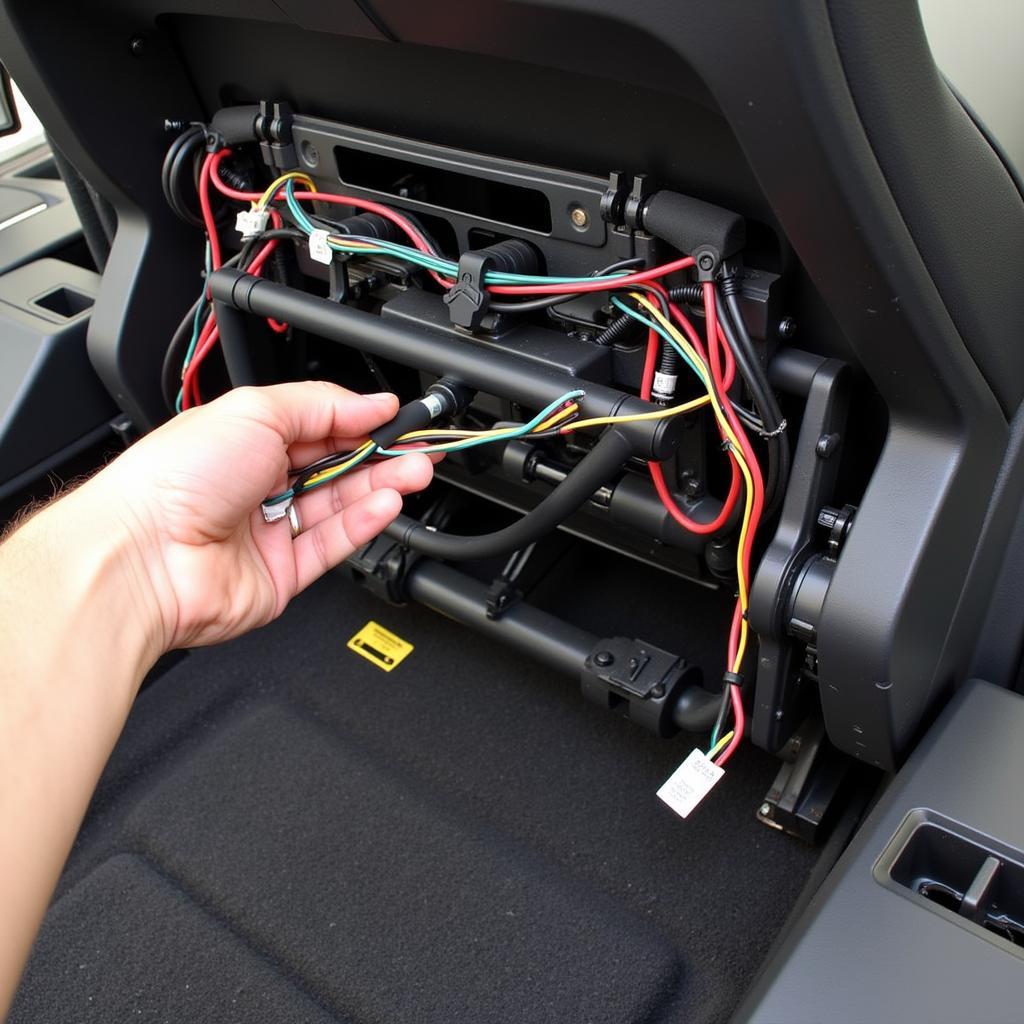The F30 seat belt warning light is a safety feature designed to remind drivers and passengers to buckle up. While it primarily serves as a safety reminder, a persistent warning light can sometimes indicate a fault within the seat belt system. This comprehensive guide delves into the common causes of the F30 seat belt warning light and provides step-by-step instructions on how to diagnose and resolve the issue.
 F30 Seat Belt Warning Light on Dashboard
F30 Seat Belt Warning Light on Dashboard
Understanding the F30 Seat Belt Warning System
The F30, like most modern vehicles, utilizes a sophisticated seat belt warning system comprising sensors, wiring, and a control module. When you start the engine, the system runs a self-check. If a fault is detected, the seat belt warning light on the dashboard illuminates, accompanied by an audible chime in most cases.
Common Causes of F30 Seat Belt Warning Light
The F30 seat belt warning light can be triggered by several factors, ranging from a simple oversight to a more complex electrical issue. Here are some of the most common culprits:
1. Unfastened Seat Belt
The most obvious reason for the warning light is an unfastened seat belt. Always ensure that both the driver and passengers have fastened their seat belts before starting the engine.
2. Faulty Seat Belt Buckle Sensor
The seat belt buckle houses a sensor that detects whether the buckle is fastened. If this sensor malfunctions, it can trigger a false warning.
3. Damaged Seat Belt Wiring
Wires running beneath the seats connect the seat belt buckle sensor to the vehicle’s electrical system. Over time, these wires can become frayed or damaged, leading to a faulty connection.
4. Seat Occupancy Sensor Malfunction
Some F30 models are equipped with seat occupancy sensors that determine if a passenger is present. A malfunctioning sensor may incorrectly signal an unbuckled seat belt.
 F30 Seat Belt Buckle Sensor Close-up
F30 Seat Belt Buckle Sensor Close-up
Diagnosing the F30 Seat Belt Warning Light
Before attempting any fixes, it’s crucial to diagnose the root cause of the warning light. Here’s a step-by-step guide:
- Check the Obvious: Begin by ensuring all seat belts are securely fastened. Sometimes the simplest solution is the most likely.
- Inspect the Seat Belt Buckles: Examine the buckles for any visible damage, debris, or misalignment. A damaged buckle may not latch correctly, triggering the warning light.
- Check Under the Seats: Carefully inspect the wiring beneath the seats for any signs of wear, cuts, or loose connections. Pay close attention to the areas where the wires connect to the seat belt buckles and the floorboard.
Resolving the F30 Seat Belt Warning Light
Once you’ve identified the cause, you can proceed with the appropriate solution:
1. Fasten Seat Belts Correctly
Ensure all occupants have fastened their seat belts firmly and that the buckle is properly latched.
2. Clean the Seat Belt Buckles
Use a can of compressed air or a vacuum cleaner with a brush attachment to remove any dirt, dust, or debris that may be interfering with the buckle sensor.
3. Repair or Replace Damaged Wiring
If you discover damaged wiring, consult a qualified mechanic or an auto electrician to repair or replace the faulty wires. Attempting to fix the wiring yourself without proper knowledge and tools can be dangerous.
4. Replace Faulty Components
If the diagnosis points to a faulty seat belt buckle sensor or a malfunctioning seat occupancy sensor, these components will need to be replaced. While it is possible to replace these parts yourself, it’s generally recommended to have it done by a professional to ensure proper installation and coding.
 F30 Seat Belt Wiring Harness Under the Seat
F30 Seat Belt Wiring Harness Under the Seat
Remote Software Solutions for F30 Seat Belt Warning
In certain instances, the F30 seat belt warning light may be caused by software glitches within the vehicle’s control modules. In such cases, remote software solutions can provide a convenient and effective way to diagnose and resolve the issue.
“Remote diagnostics and software flashing are becoming increasingly prevalent in the automotive industry,” says Jake Carter, a senior automotive diagnostician at Advanced Auto Solutions. “These technologies allow us to identify and rectify software-related faults remotely, saving our customers time and inconvenience.”
By utilizing specialized software and equipment, qualified technicians can remotely access the F30’s onboard computer system, diagnose the root cause of the warning light, and install the necessary software updates or recalibrations to restore proper functionality. This eliminates the need for physical visits to a repair shop in many cases.
Conclusion
The F30 seat belt warning light plays a crucial role in ensuring the safety of the driver and passengers. Understanding the common causes and solutions for a persistent warning light can help you address the issue promptly and maintain the optimal safety of your vehicle. If you’re uncomfortable with diagnosing or fixing the problem yourself, it’s always best to seek assistance from a qualified mechanic or an auto electrician. Remember, a properly functioning seat belt system is paramount for a safe driving experience.
